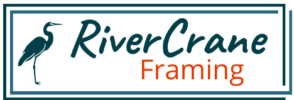Last weekend I was teaching the Basics of Framing and Mount Decoration in Devon near Exeter – this was the view from my “classroom” in the village hall, so even though we were inside all weekend, the outlook was inspiring, peaceful and perfect for reviving a city soul!
Framing and Choices
When we do the Basics of Framing, we ask the students to bring along an image no bigger than an A4 page. This means that they have a reasonable size piece of artwork to work with, nether too big nor too small, and the glass, cutting equipment and other stock we bring is all suitable. Typically the class is made up of a mix of photographers and artists, and so the range of media varies, providing a lot of interest.
There is much to consider when framing your art including, quite obviously, the frame itself and the mount board. The range of choice available in these alone can leave you baffled for some time, so for the introductory course we do away with choice, and stick to teaching the basics. Even so there are decisions to be made, and the one I’m interested in today is the aperture.
Managing the Aperture
The aperture is that part of the image that you’ll see once you have framed the picture. You may think that you want to see all of the picture and for the most part this is true, but you still need to have a small amount of the image under the mount, so that it doesn’t fall through the aperture. Generally we recommend you measure 5mm less than the image to establish the aperture size.
Here’s where it’s interesting… if you take a standard size photograph or image to buy a standard size frame, you don’t get much flexibility on what you want to show or hide. When you’re making your own frames, you have complete control. What’s to stop you creating a square aperture for an A4 size image?
Think outside the box and never cut the artwork!
What should you do if the image is skew or too big? The important thing is that you should never cut the artwork. I advise this even if it’s your own and it’s a photograph that you can get reprinted. It’s a good habit to get into. This question regularly comes up in class and students are keen to trim off the bits they don’t like. This past weekend one of my students had a fab black and white photograph, with a few bits he wasn’t so keen on and having settled on an aperture, wanted to know if he could cut off the rest. We looked at the depth of the border and I showed him that by playing with the aperture size he could hide some of the image he felt was distracting without having to trim anything. By keeping it intact, he was able to change his mind about what he wanted to expose and finally settled on a square aperture with a wide border and the result was a much more powerful piece of work.
So don’t be limited by what you can get off the shelf, play with the space and image, and then make a frame to fit the results.

